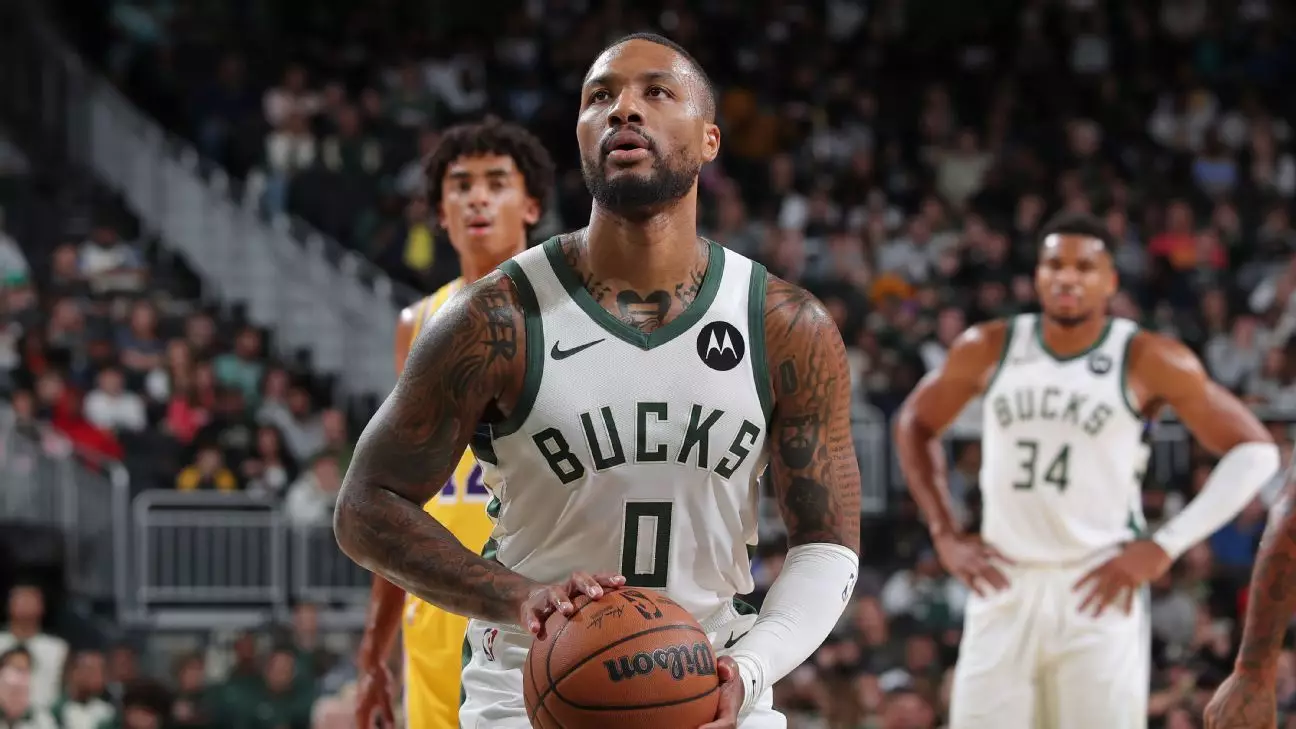In a startling development for the Milwaukee Bucks and the wider NBA community, star guard Damian Lillard has been diagnosed with deep vein thrombosis (DVT) in his right calf. This serious condition, characterized by the formation of a blood clot, comes at a critical juncture in the season, raising immediate concerns about both Lillard’s health and the dampening effect on the Bucks’ playoff ambitions. Lillard’s diagnosis, confirmed by the team, has resulted in him being sidelined indefinitely. With players’ wellbeing becoming paramount amid heightened scrutiny on athlete health, this news serves as a poignant reminder of the vulnerability professional athletes face, despite their seemingly invincible personas.
Health as a Priority
Bucks’ general manager Jon Horst emphasized that Lillard’s health is the franchise’s primary concern, aligning with a broader movement within professional sports that prioritizes player wellness over immediate competition. Lillard is currently on blood-thinning medication, a critical step in managing his condition. The fact that the situation was identified and treated swiftly is a testament to the medical staff’s diligence, yet it raises questions about how well the league prepares its athletes for potential health emergencies. The conversations surrounding medical protocols and preventative measures are more relevant than ever as we witness high-caliber players facing serious health issues.
Impact on Team Dynamics
As the Bucks grapple with Lillard’s absence, the on-court impact is undeniable. Historically, there’s a noticeable dip in team performance when their star player is unavailable; the Bucks have indeed struggled, winning only eight games without Lillard to show for it this season. Scoring averages plummet substantially when the point guard is not on the floor, highlighting just how heavily Milwaukee relies on his contributions. The synergy between Lillard and fellow superstar Giannis Antetokounmpo had the potential to catapult the Bucks into championship discussions, but this setback could significantly alter the trajectory of their season.
A League Under Pressure
The incident isn’t isolated, as it echoes the timing of similar injuries that plague elite players just when the stakes get higher. Recent history recalls the likes of Victor Wembanyama’s abrupt shutdown due to a related issue, suggesting a worrying trend where injuries intersect with pivotal moments in the season. This raises pressing questions about how the league navigates player health. Are the physical demands of the season too strenuous? Is enough being done to manage player workloads and safeguard against such debilitating conditions?
The Road Ahead
As the Bucks look to establish themselves in a fiercely competitive Eastern Conference, their immediate focus will inevitably shift to adapting their game plan without one of their leading scorers. With Lillard’s absence, the team faces a crucial juncture where depth and adaptability will be tested. The upcoming playoffs loom larger than ever, and without Lillard, the challenge intensifies. Yet, it’s not just the Bucks that face uncertainty; the entire league must grapple with the business of sports amid serious health issues. For now, the spotlight shines on Lillard—not only as a player to root for, but as a reminder of the fragile nature of sportsmanship in the face of health crises.

